Refund Guaranteed

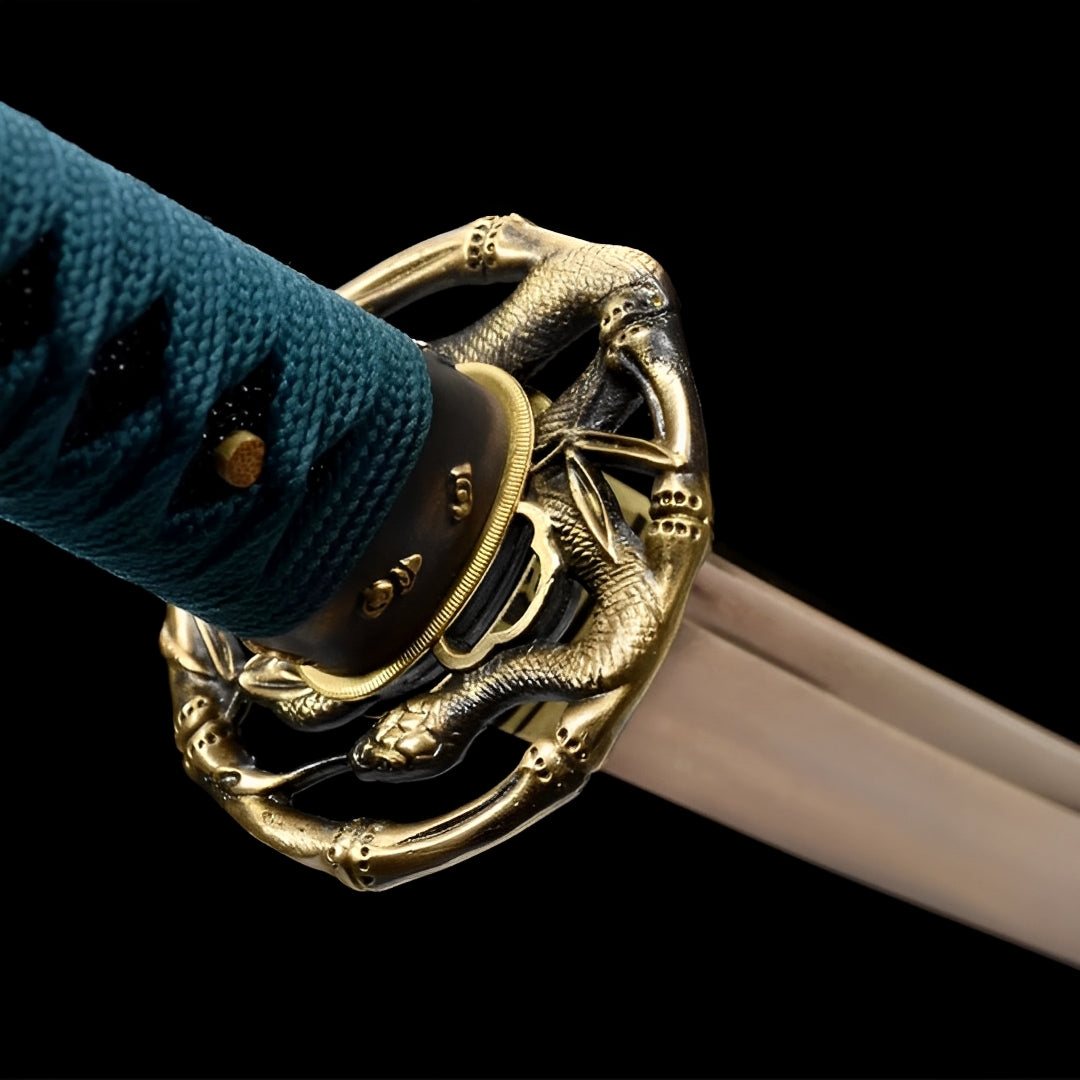
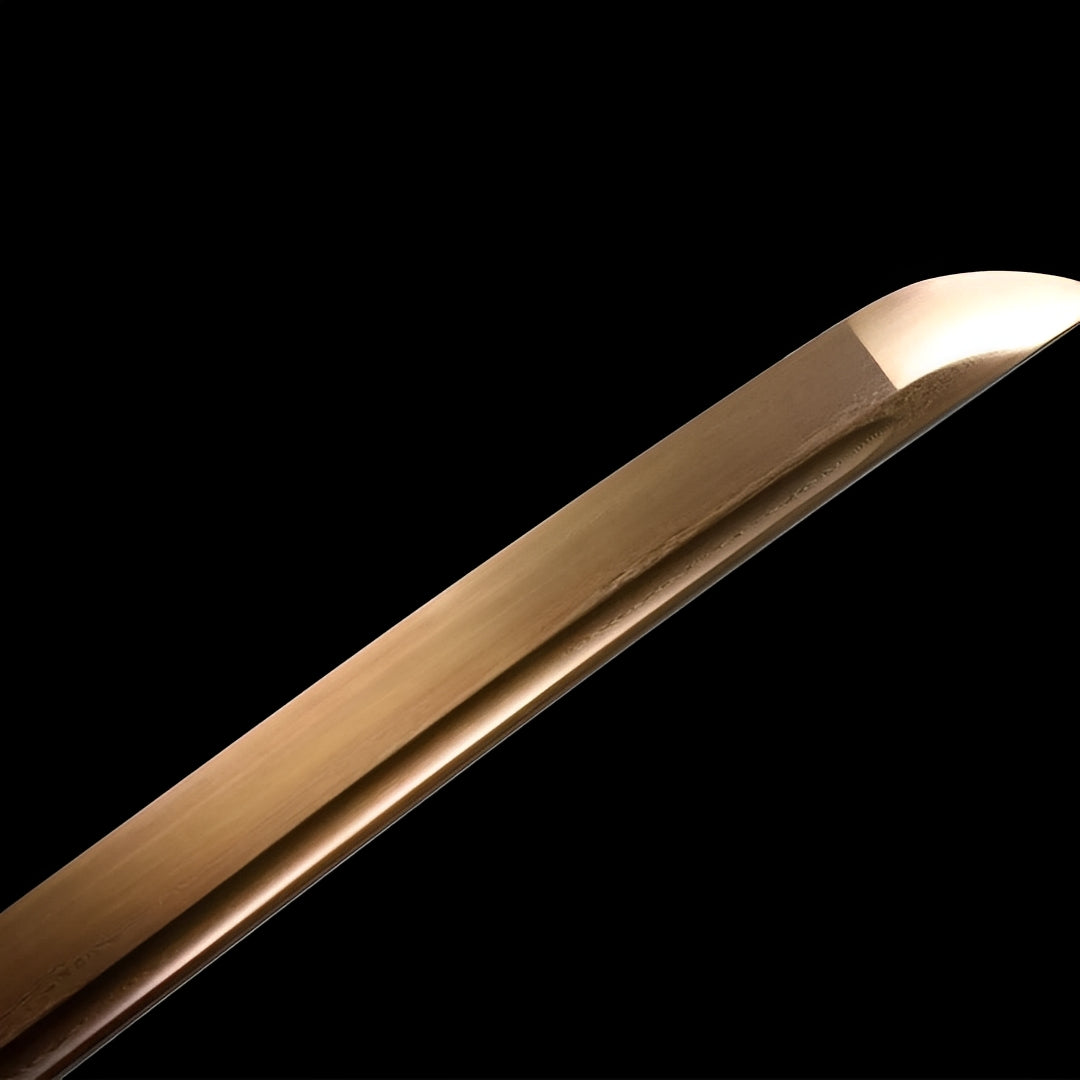
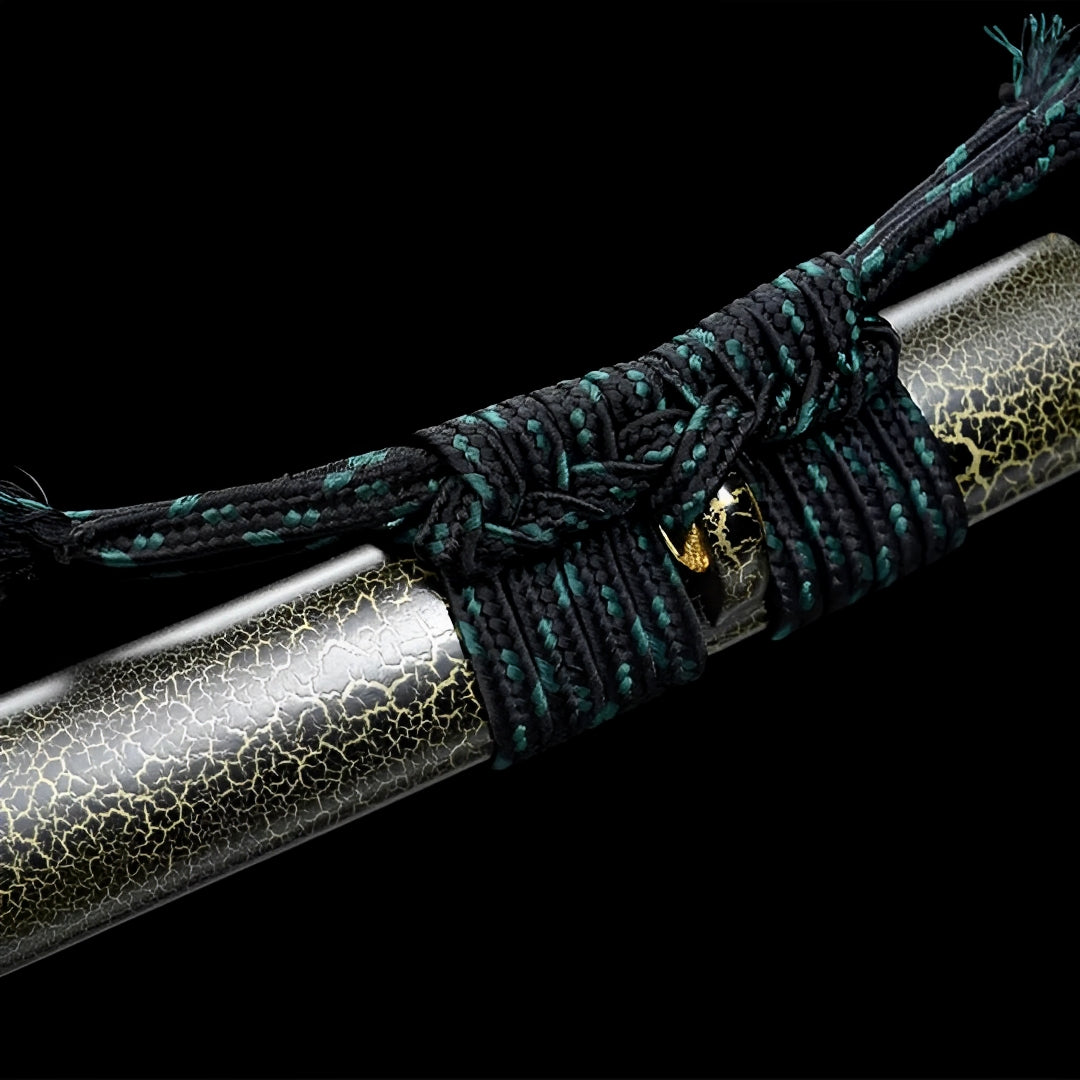
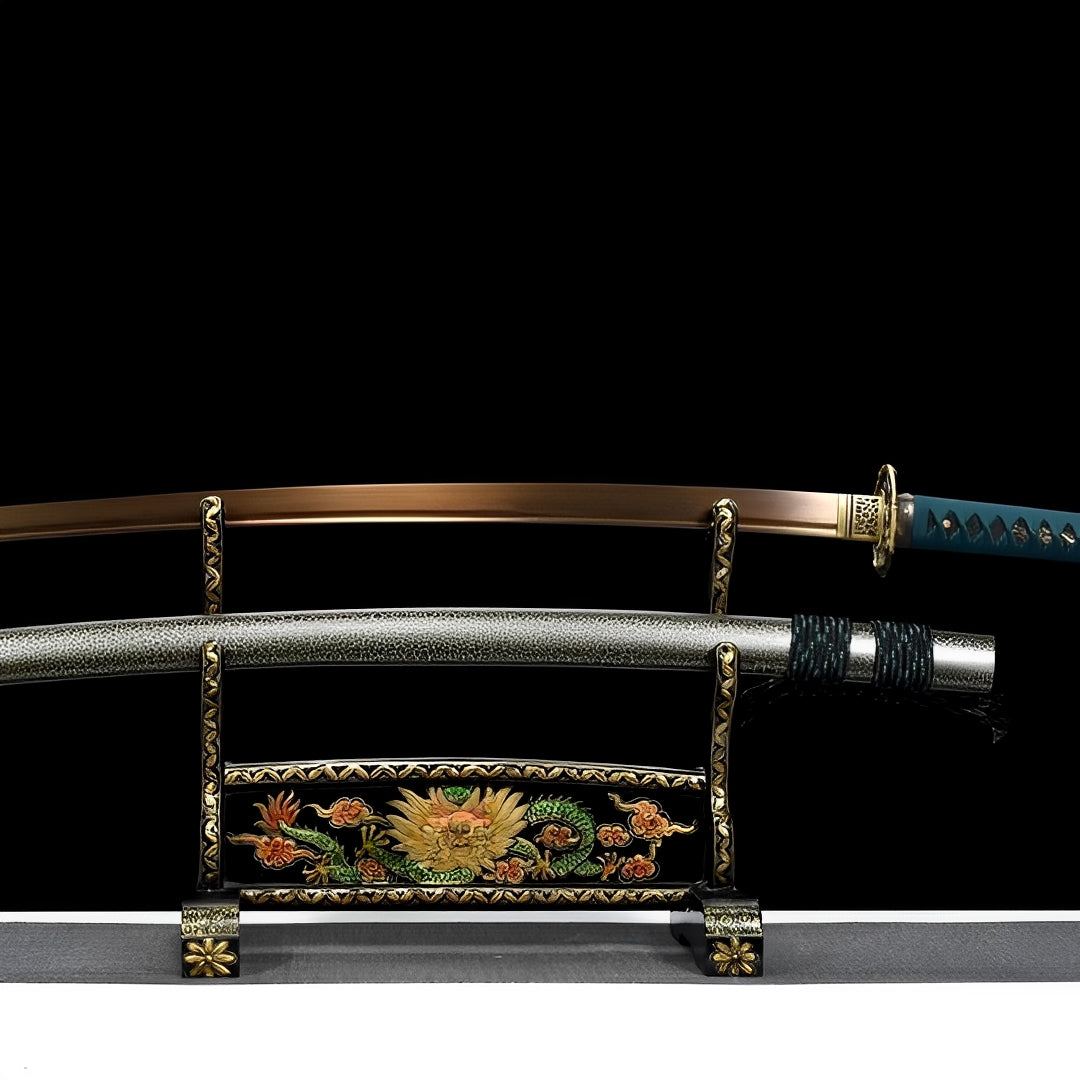
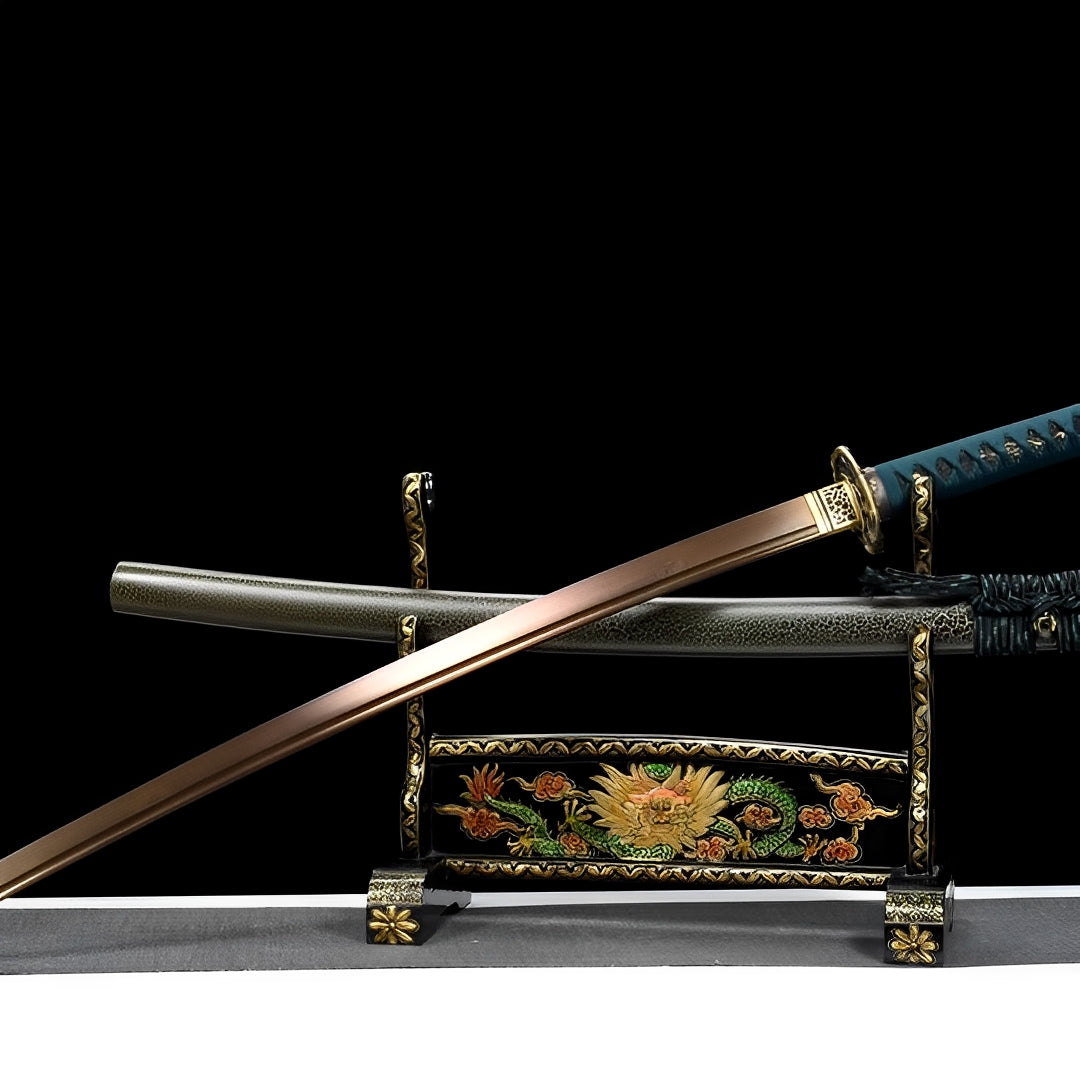


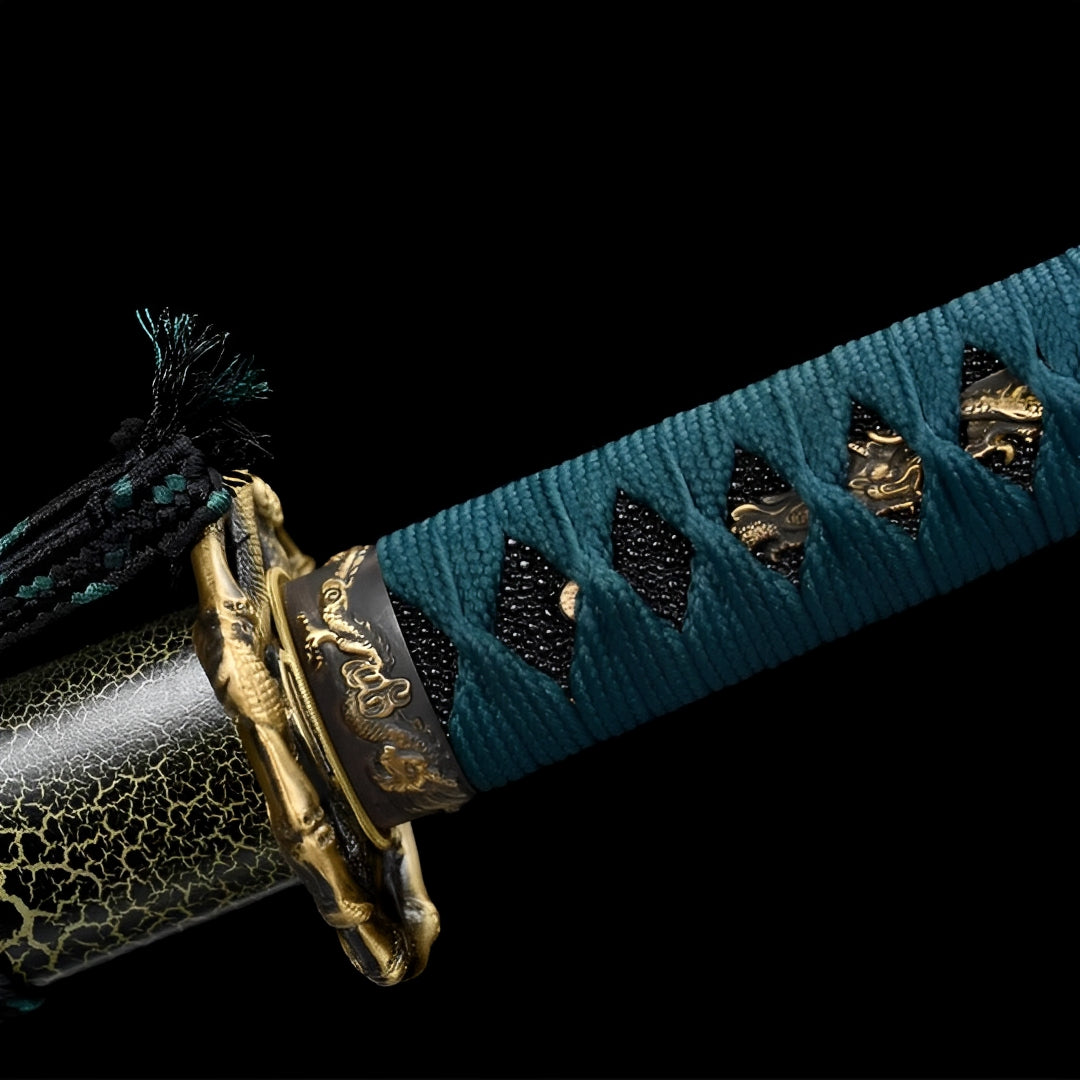
Why choose us
Ships within 48/72h
Forged Blade
Collector Quality
Trusted Globally
Inspired by Japan
Harugasumi Katana - 若葉刀
Included with your order



Note: Engraving placement and orientation may vary by blade model (hamon, geometry, and flat area).
Free Shipping over $250
No Bots, No AI
Refund Guaranteed
Free Shipping over $250
No Bots, No AI
Our team is here to help with any questions or concerns.
We’re always happy to assist you — don’t hesitate to reach out.
Why choose us
Ships within 48/72h
Forged Blade
Collector Quality
Trusted Globally
Inspired by Japan

Harugasumi Katana - 若葉刀
Specifications
- Handcrafted
- SHARP
- Blade: Gold-grilled damascus steel (rare)
- Copper tsuba
- Saya in lacquered wood with pattern
- Tsuka in synthetic Rayskin
- Cotton Tsuka-ITO
- Black and green SAGEO
- Bamboo Mekugi
- Copper Habaki
- Full tang in handle
- Total size: 105cm
- Blade size: 72cm
- Blade width: 3.2cm
- Blade thickness: 0.7cm
- Handle size: 30cm
Harugasumi Katana - Spring Haze Poetry Blade
Breathe spring's fleeting beauty with Harugasumi Katana, sword capturing season's most ephemeral moment. This lyrical seasonal blade refuses static representation - ethereal teal suggesting sky between winter's departing gray and summer's arriving azure, frosted silver evoking morning mist clinging to wakening earth, bronze whispers of cherry bark preparing to bloom, the entire piece embodying Japanese concept that beauty peaks precisely when disappearing. Not weapon celebrating permanence but meditation on transience, asking whether appreciation deepens knowing spring lasts mere weeks before summer's heat burns away its delicate perfection.
Spring Haze Phenomenon
Harugasumi (春霞 - Spring Haze) describes specific atmospheric condition occurring during Japan's spring transition. As winter's cold air retreats and earth warms, moisture creates distinctive soft haze - not fog's thick opacity nor summer's humid shimmer, but gentle veil through which landscapes appear dreamlike, distant mountains seeming painted watercolor rather than solid stone, cherry blossoms viewed through natural filter making reality appear more beautiful than actuality.
This meteorological poetry blade captures phenomenon beloved in classical Japanese aesthetics. Haiku poets made harugasumi essential spring kigo (seasonal word), its inclusion immediately establishing temporal context and emotional resonance. The haze symbolized life's transitions - winter's death yielding to spring's rebirth, certainty dissolving into possibility, harsh clarity softening into gentle ambiguity.
Traditional Japanese painting particularly celebrated spring haze effects. Yamato-e and later ukiyo-e artists developed techniques suggesting atmospheric perspective through reduced detail, lighter tones, simplified forms - visual vocabulary communicating "this scene exists in harugasumi" without literal haze depiction. This artistic atmosphere sword applies those principles to three-dimensional object, using color and texture creating similar ephemeral quality.
The phenomenon also carried Buddhist philosophical weight. Harugasumi's temporary nature exemplified mujo (無常 - impermanence), core concept teaching that attachment to transient things causes suffering yet recognizing transience enables deeper appreciation. The haze beautiful because temporary, spring precious because brief - wisdom captured in single poetic word.
Collectors appreciating Japanese aesthetics recognize harugasumi as sophisticated reference transcending surface prettiness, connecting to centuries of poetry, painting, philosophy exploring what makes beauty meaningful. This isn't random nature name but deliberate invocation of specific cultural concepts.
Teal Transition Waters
The deep teal handle creates this blade's defining color - that precise hue existing between blue and green, winter and spring, sky and earth. Color theory calls this intermediate shade; Japanese aesthetics recognize it as capturing transitional moments when one season yields to another, old endings enabling new beginnings.
Teal specifically suggests meltwater - winter's ice transforming into spring streams, frozen ponds becoming liquid again, snow on distant mountains feeding rivers swelling with seasonal abundance. This transitional blade color embodies that transformation, neither fully cold blue nor warm green but perfect balance suggesting change in progress.
Traditional Japanese color vocabulary featured extensive seasonal associations. Certain greens indicated new growth, specific blues suggested rain types, teal shades connected to particular moments within spring's progression. The handle's teal therefore communicates temporal specificity - not generic spring but early spring, that fragile period when winter's grip finally releases yet summer remains distant promise.
The color also references misty mornings when sky and landscape blur together, when teal seems to dominate as blue sky filters through green trees through white haze, all three colors merging into single atmosphere-colored experience. That perceptual ambiguity - "is this blue or green?" - mirrors spring's essential character as season between seasons.
Modern color psychology associates teal with balance, renewal, calm clarity - appropriate for season when natural world recalibrates after winter's dormancy. The renewal color blade speaks to anyone experiencing personal transitions, seeking calm amid change, finding beauty in liminal states.
Frosted Silver Morning
The silver saya's textured finish creates visual suggesting frost, morning dew, ice crystals catching dawn light - all phenomena associated with spring mornings when temperatures still dip below freezing yet sun's warming promise becomes evident. The crackled or stippled effect isn't random decoration but deliberate evocation of natural patterns ice creates on glass, dew forms on spider webs, frost paints on early leaves.
This dawn phenomenon blade captures that magical hour when spring mornings transform - darkness to light, cold to warm, frozen to flowing, sleeping to waking. Anyone who's witnessed spring dawn in Japan knows that particular quality of light, air, atmosphere making mundane scenes appear transcendent. The silver saya channels that experience through material and texture choices.
Traditional Japanese metalwork frequently incorporated nature-inspired textures. Craftsmen developed techniques creating surfaces resembling tree bark (ishime), raindrop patterns (nanako), rough stone (migaki-ji) - entire vocabulary of textural effects allowing metal expressing natural phenomena. The frosted silver continues that tradition, proving contemporary craftsmen maintain those sophisticated surface treatment skills.
The silver's reflective quality also matters - catching available light, seeming to glow softly like morning mist illuminated by rising sun, changing appearance throughout day as light conditions shift. That dynamic quality prevents the blade becoming static display piece, instead creating living presence responding to environment like natural phenomena it represents.
Bronze Cherry Bark
The bronze section features what appears to be nature engraving - possibly cherry trees, mountain landscapes, or abstract patterns suggesting organic forms. Bronze specifically references cherry bark's distinctive color and texture, the warm metallic tone matching perfectly those iconic trees whose blossoms define Japanese spring aesthetics.
Cherry blossoms (sakura) carry such cultural weight in Japan that entire philosophy developed around their brief peak - mono no aware (物の哀れ), "pathos of things" or bittersweet awareness of transience. Blossoms bloom magnificently for mere days before wind scatters petals, that impermanence making them more precious than eternal flowers could ever be. The cherry philosophy blade bronze invokes that tradition without literally depicting blossoms, letting viewers' cultural knowledge complete the reference.
Traditional Japanese bronze developed distinctive patinas through intentional chemical treatments - brown-red tones, green-blue verdigris, black oxidation - each color carrying aesthetic and symbolic meanings. The warm bronze chosen here suggests living wood, bark soaking spring rain, trunks supporting weight of blossoms about to burst forth.
The engraved patterns themselves deserve close examination. If depicting natural scenes, which details receive emphasis? Mountains suggesting eternal permanence contrasting against spring's transience? Water suggesting constant flow yet seasonal variation? Trees representing cyclical renewal? Each interpretive choice creates different philosophical resonance.
Seasonal Collecting Philosophy
This contemplative piece serves different collecting purpose than action-oriented anime swords or gaming weapons. It exists for quiet appreciation, for moments when aesthetic experience matters more than franchise association, when owning beautiful object provides daily reminder of philosophical concepts worth remembering.
The seasonal theme specifically appeals to collectors interested in Japanese cultural depth beyond surface media engagement. Understanding why harugasumi matters, what mono no aware means, how seasonal aesthetics function in traditional arts - that knowledge transforms owning replica into participating in centuries-old conversations about beauty, transience, meaningful appreciation.
Display timing considerations become relevant. Some collectors rotate seasonal pieces - displaying harugasumi during actual spring, substituting autumn-themed items when leaves turn, winter pieces during snow months. That ritualized rotation honors Japanese traditions where seasonal awareness permeated daily life through food, decoration, clothing, even conversation topics deemed appropriate for specific times.
Interior design perspectives welcome seasonal pieces as dynamic collection elements preventing spaces from becoming stagnant. The teal-silver-bronze palette works beautifully in spaces featuring natural materials, earth tones, botanical elements - increasingly popular aesthetic as people seek reconnecting with nature through interior environments.
Mindful collectors particularly appreciate pieces encouraging contemplation rather than consumption. Fast fashion collecting accumulates items briefly exciting then forgotten; contemplative collecting curates fewer pieces commanding sustained attention, each object chosen for qualities rewarding repeated viewing, each possession serving as meditation prompt rather than mere decoration.
Care Instructions: Maintain this blade with spring's gentle care. The teal wrapping benefits from soft brush dusting; aggressive cleaning damages delicate fibers. The frosted silver requires understanding that patina developing over time isn't damage but natural aging echoing spring's own transformation processes - polish carefully, preserving texture while preventing tarnish. Bronze section should develop warm patina gracefully; resist over-polishing that removes character. Display near natural light sources allowing atmospheric conditions affecting appearance as real spring haze shifts with sun angles and humidity. Rotate seasonally if possible, storing during off-seasons in climate-controlled conditions. Handle while contemplating impermanence, beauty's fragility, wisdom of appreciating transient things deeply rather than permanent things superficially.
Spring mist rises. Cherry trees await. Beauty blooms briefly, treasured eternally.
Legal Disclaimer
By purchasing from Katana Corp, you acknowledge and agree that:
- You are at least 18 years of age (or the age of majority in your jurisdiction).
- You are solely responsible for verifying and complying with all local laws and import regulations before placing an order.
- Some countries prohibit the importation of swords entirely. Katana Corp is not responsible for orders delayed, seized, or refused by customs authorities.
- All katanas and related products are sold strictly as decorative and display items. They are not intended or certified for combat use.
- Depending on the jurisdiction, swords may legally be considered bladed weapons, subject to specific restrictions or prohibitions.
- Katana Corp disclaims all liability for any injury, damage, or legal consequences resulting from misuse, abuse, or unlawful use of its products.
For full details, please refer to our Terms of Service.
Care & Maintenance
To maintain your katana's appearance and performance over time, we recommend:
- Regularly wiping the blade with a soft cloth to remove fingerprints and moisture.
- Applying a light coat of choji oil to prevent rust (for carbon steel blades).
- Storing the sword in a dry place, preferably inside its saya.
- Avoiding direct contact with hard surfaces to preserve sharpness and finish.
For more care tips, check our full maintenance guide in the FAQ section.
Behind the Blade
Every katana we offer carries the essence of centuries-old craftsmanship.
More than just a weapon, the katana symbolizes discipline, honor, and mastery.
Our artisans draw inspiration from traditional forging methods to ensure each blade reflects the spirit of the samurai — strength, precision, and soul.
Owning one is not just about aesthetics — it’s about carrying a piece of that legacy.
User Experience
This katana is designed to offer a perfect balance between blade and handle.
Its ergonomic tsuka (handle) allows a secure two-handed grip, while the weight distribution ensures smooth, fluid movement.
Whether for training, display or cutting practice, handling feels natural and precise.

The Art of Traditional Forging
Each katana we craft is born from centuries of samurai tradition.
Our master smiths shape every blade by hand, folding the steel to achieve unmatched strength, flexibility, and beauty.
This time-honored process is not just about creating a weapon? it’s about preserving a legacy of discipline, honor, and artistry.
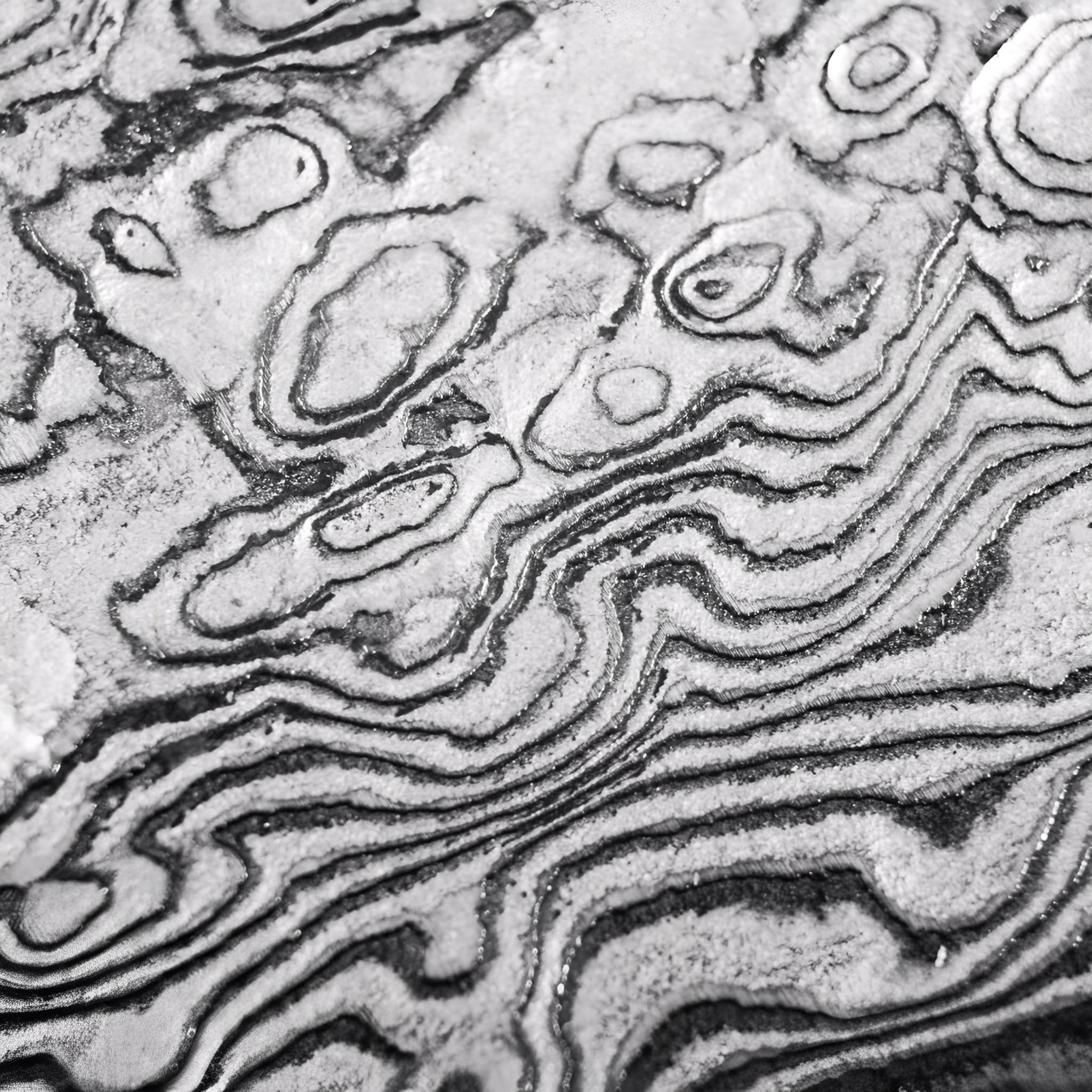
Materials Chosen Without Compromise
We select only the highest-grade steels and authentic fittings to ensure every katana is both a masterpiece and a reliable companion.
From the flawless hamon line to the perfectly balanced tang, each detail is carefully inspected to meet the highest standards of performance and aesthetics.
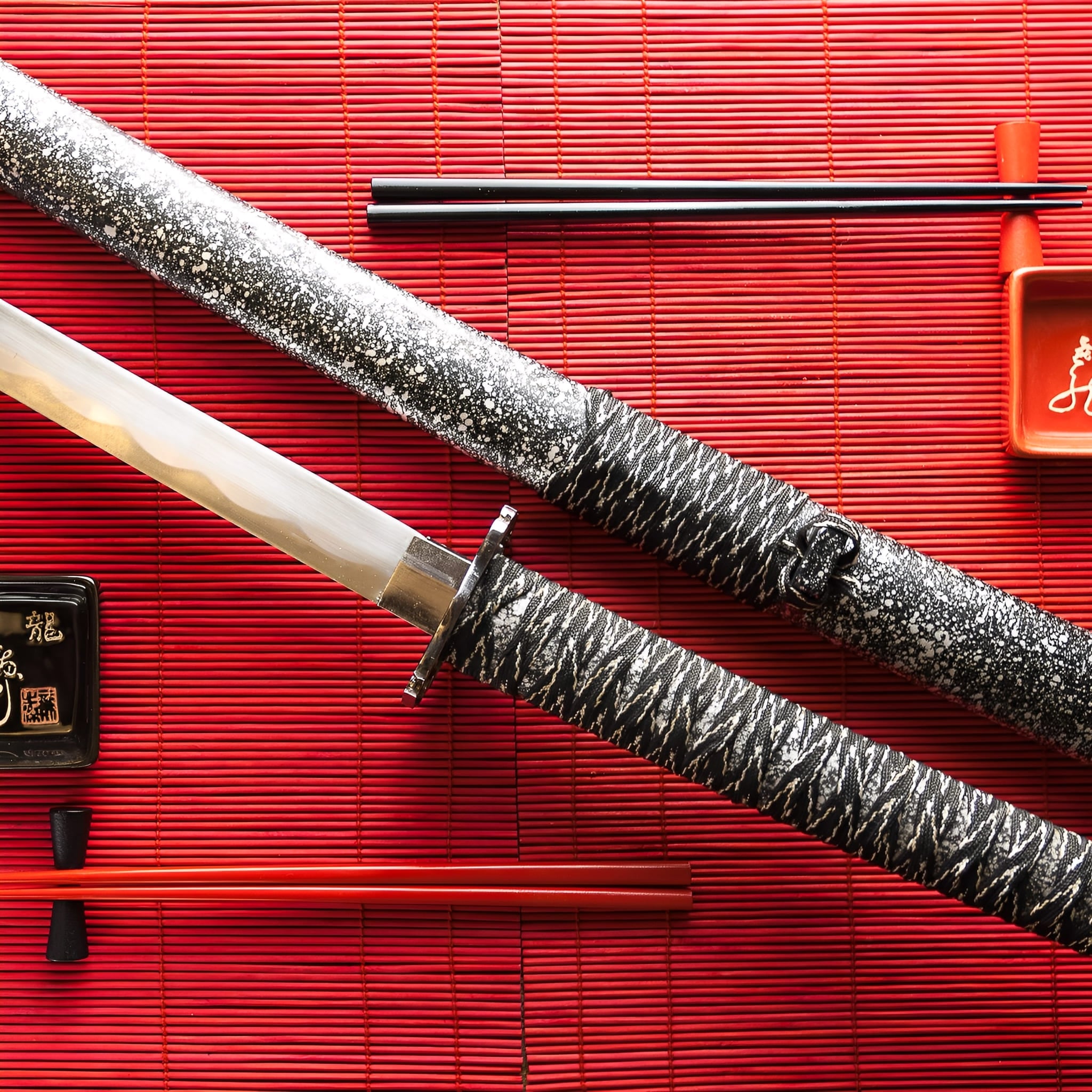
More Than a Sword, A Lifelong Legacy
Owning a handmade katana is an experience that goes beyond the blade itself. It’s holding history, tradition, and craftsmanship in your hands.
Whether displayed as a work of art or wielded with precision, your katana will stand as a symbol of timeless skill and dedication for generations to come.
-
Key Destinations
United States: 5–7 days
Canada: 5–7 days
Australia: 6–9 days
Denmark: 4–6 days
Netherlands: 3–5 days
Sweden: 4–6 days
Switzerland: 3–5 days
Finland: 5–7 days
Singapore: 6–8 days -
Central European Partners
France: 2–3 days
Germany: 3–5 days
Spain: 4–6 days
Italy: 4–6 days
Belgium: 3–5 days
Austria: 4–6 days
Ireland: 4–6 days
Poland: 4–6 days
Portugal: 4–6 days -
Extended EU Network
Czechia: 4–6 days
Hungary: 4–6 days
Slovakia: 4–6 days
Slovenia: 5–7 days
Romania: 5–7 days
Bulgaria: 5–7 days
Croatia: 5–7 days
Serbia: 5–7 days
Estonia: 5–7 days
Latvia: 5–7 days
Lithuania: 5–7 days
Luxembourg: 3–5 days
Greece: 5–8 days -
FAQ’s
Visit our FAQs page to find answers to common questions.